ARTWORKS
Yasmine keeps in mind the words of the great Reunionese poet Jean Albany: “Mon île était le Monde” (“My island was the world”) said in the postmortem documentary Mon île était le Monde – La Réunion de Jean Albany by Jacques Baradier. She contracts the expression Mon île était le monde and creates another in the present tense Ma Rivière des Galets est l’Univers (Ma Rivière des Galets is the Univers). She has thus incorporated her living and artistic space – La Rivière des Galets, Reunion island – into a new spatial model.
LA RIVIÈRE DES GALETS / PEBBLE RIVER
GRAINE DE RIVIERRIER / RIVER SEED
-
B/W print made from silver film, 130 cm x 84 cm and manuscript text on grey iridescent paper, 210 mm x 297 mm.
Art and writing are the means to maintain a connection with the space of the River Pebbles.
__________________
GRAINE DE RIVIERRIER
Yasmine Attoumane
Yesterday, I had a dream.
I was offered a Rivierrier seed.
Plant it with your hands, your elbows and then your knees, because that’s how we plant it here, » I was advised.
Above all, don’t say anything to Entropy.
I carried out the tasks.
A year passed, the seed grew and I avoided Entropy.
Ten centuries passed, things changed around me and my seed remained a seed.
Towards the end of the year of ten centuries, I was denounced.
No, Entropy! Don’t destroy it! Don’t touch my River seed!
And Entropy gave the order.
Yesterday, I woke up and in the hollow of my wet hand.
I understood what the River Seed was
LA ROBE CLAIRE / THE VERY LIGHT DRESS
-
Color video presented on cathode ray television, duration: 50 seconds (presented in a loop and in a corner of the wall).

La robe claire is a video that was created using images to create analogies between women's bodies, nature, and photographic rooms.
SAUT DE LA DIGUE / DIKE JUMP
- Series of 8 B/W prints made from silver film, proposal with variable dimensions.

LE GRAND RANGEMENT/ THE BIG TIDY-UP
- Projection of a video triptych, duration: 19 mn, looped, from magnetic tape.
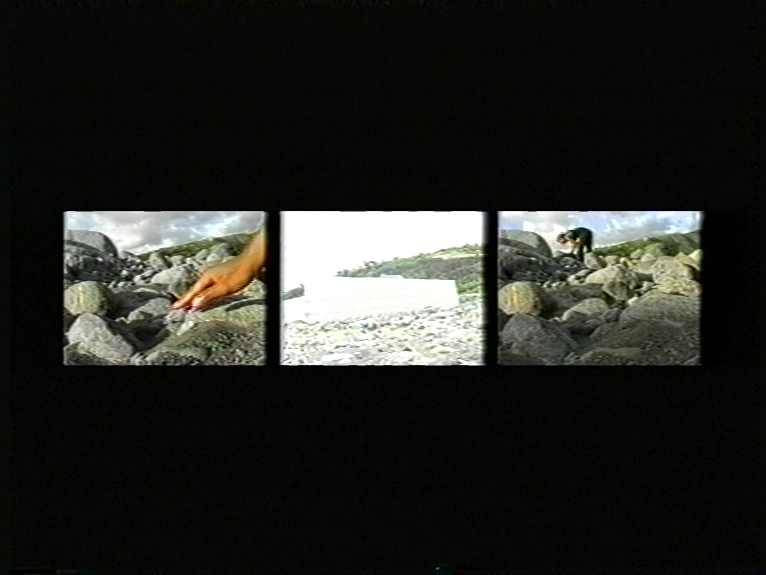
In my re-evaluation of my relationship with time in my creative process, a piece of ice becomes a sensitive reference to time, air and ground temperature, and the wind. During one performance, I dig and dig. During another performance, I store the pebbles behind the dike to rebuild, gain space on the river and protect the village of Rivière des Galets.
LA FEMME FORTE / THE POWERFUL WOMAN
- Video-montage colour, 19 mn, in loop, according to magnetic tape, display on TV.
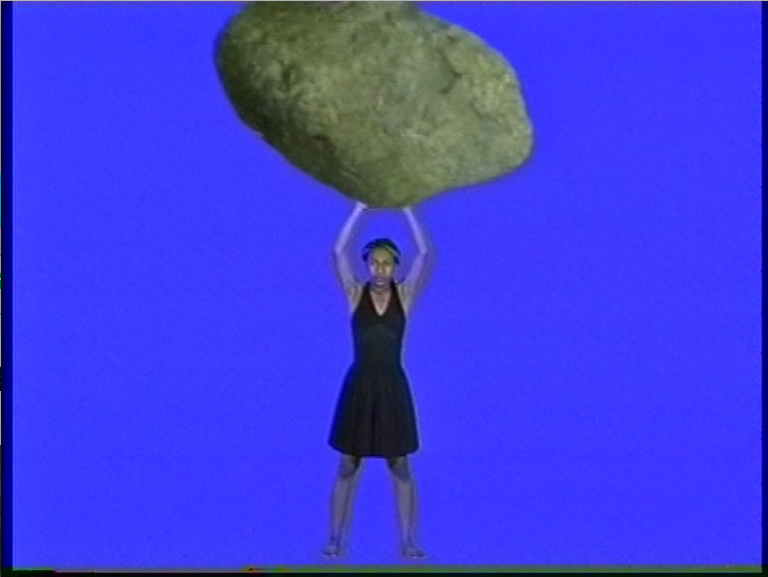
VERS LA ROUTE DE MAFATE / TO THE ROAD OF MAFATE
- Series of 7 B/W prints made from silver film.

- rostrum camera from B/W photographs, duration: evolving, floor projection for a diameter between 80 cm and 100 cm.

CIEL ÉTOILÉ, STARRY SKY
- Audiovisual installation, 7mn video projection, sand surface from the River of Pebbles and black panels, 2m x 2m x 2m.

40 PORTES / 40 DOORS
- Series of 40 color prints for outdoor display.

- This photographic project, supported by SEDRE and La Ville du Port, features some forty portraits of the inhabitants of the Rivière des Galets village.
CÉRÉMONIE CHEZ LE PRÊTRE MALABAR DE LA RIVIÈRE DES GALETS / CEREMONY AT THE PRIEST MALABAR OF THE RIVER OF PEBBLES
- Series of B/W prints made from silver film at le Prêtre malabar de la rivière des Galets.
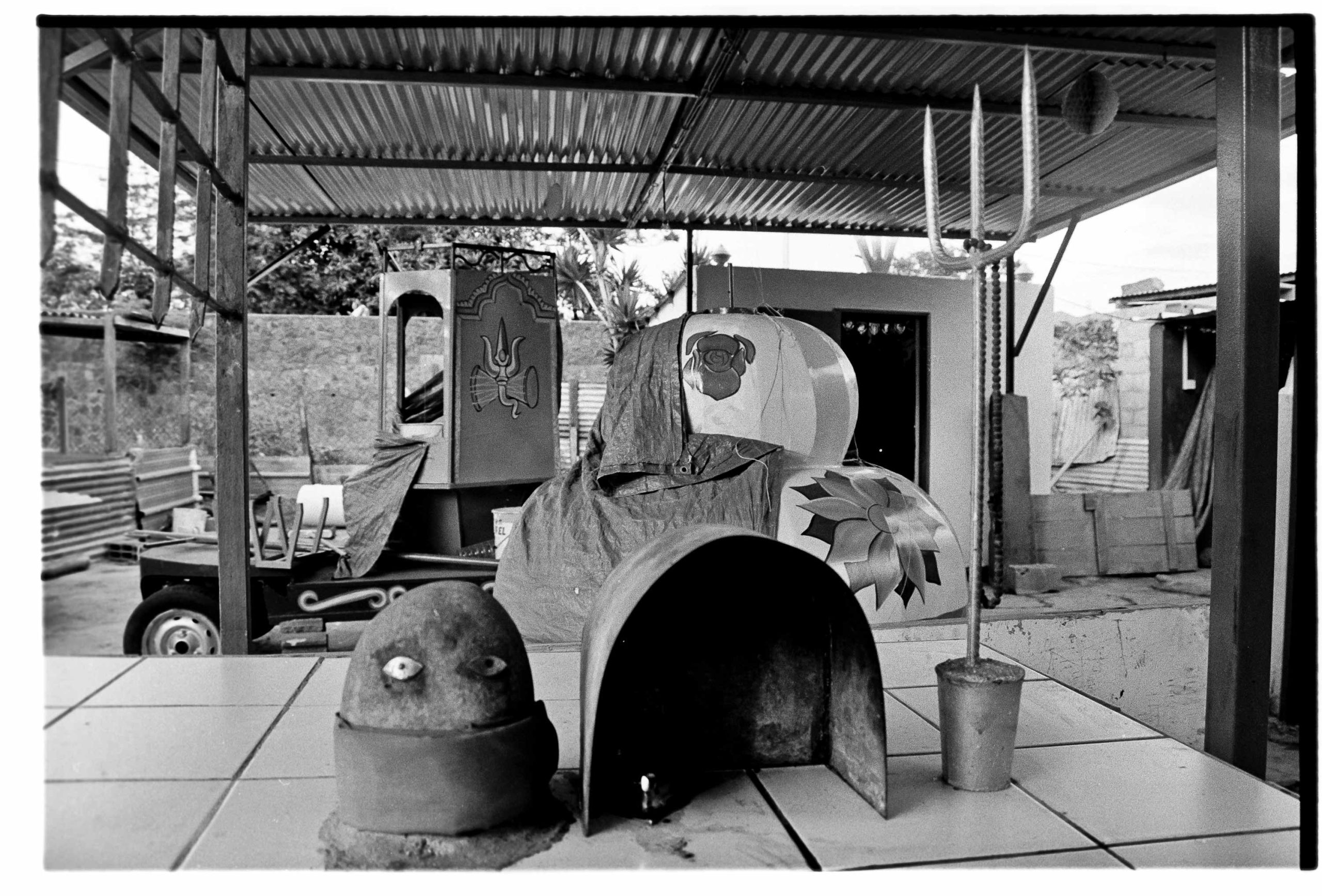
CARTE DE LA RIVIÈRE DES GALETS / MAP OF THE RIVER OF PEBBLES
- Colour print, 420 mm x 210 mm

Cartographie des quelques oeuvres créées dans le lit de la Rivière des Galets.
1. The Igloo, ice cubes with yellow and blue pigments
2. The pyramid, ice cubes with yellow and blue pigments and the melted Igloo
3. The egg, snake corpse, frozen water and yellow and blue pigments.
4. The Malabar Priest, series of documentary photographs in B/W on the Mariamène ceremony
5. The Ice Dress, ice and woolen thread
6. Le Grand Rangement, video-performance triptych
7. The Strong Woman, video performance
MA BOITE D'ALLUMETTES II / MY BOX OF MATCHES II
- Cardboard sculpture, 55mm x 35mm x 15mm.

MA BOITE D'ALLUMETTES I / MY BOX OF MATCHES
- Pen and marker drawing, on plain paper, 297 mm x 210 mm
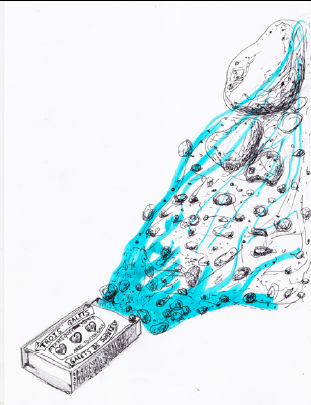
LETTRE À LA RIVIÈRE DES GALETS / LETTER TO THE RIVER OF PEBBLES
- Colour print, 297 mm X 210 mm and 1 text on letter paper, 297 mm X 210 mm.

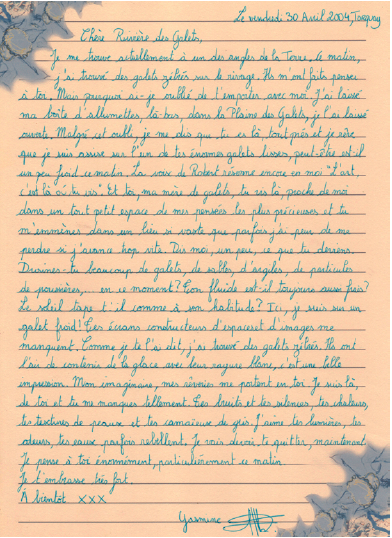
The written word and imagination are the answers to maintaining a connection with the Rivière des Galets workshop.
MA CHAMBRE A TORQUAY ET SON POST IT / MY ROOM AT TORQUAY AND ITS POST IT
- Color print from silver film, 300 mm x 300 mm and original post-it note, 80 mm x 75 mm, available in blue and orange versions.
The photomontage also documents Yasmine's installation in her room in Torquay.
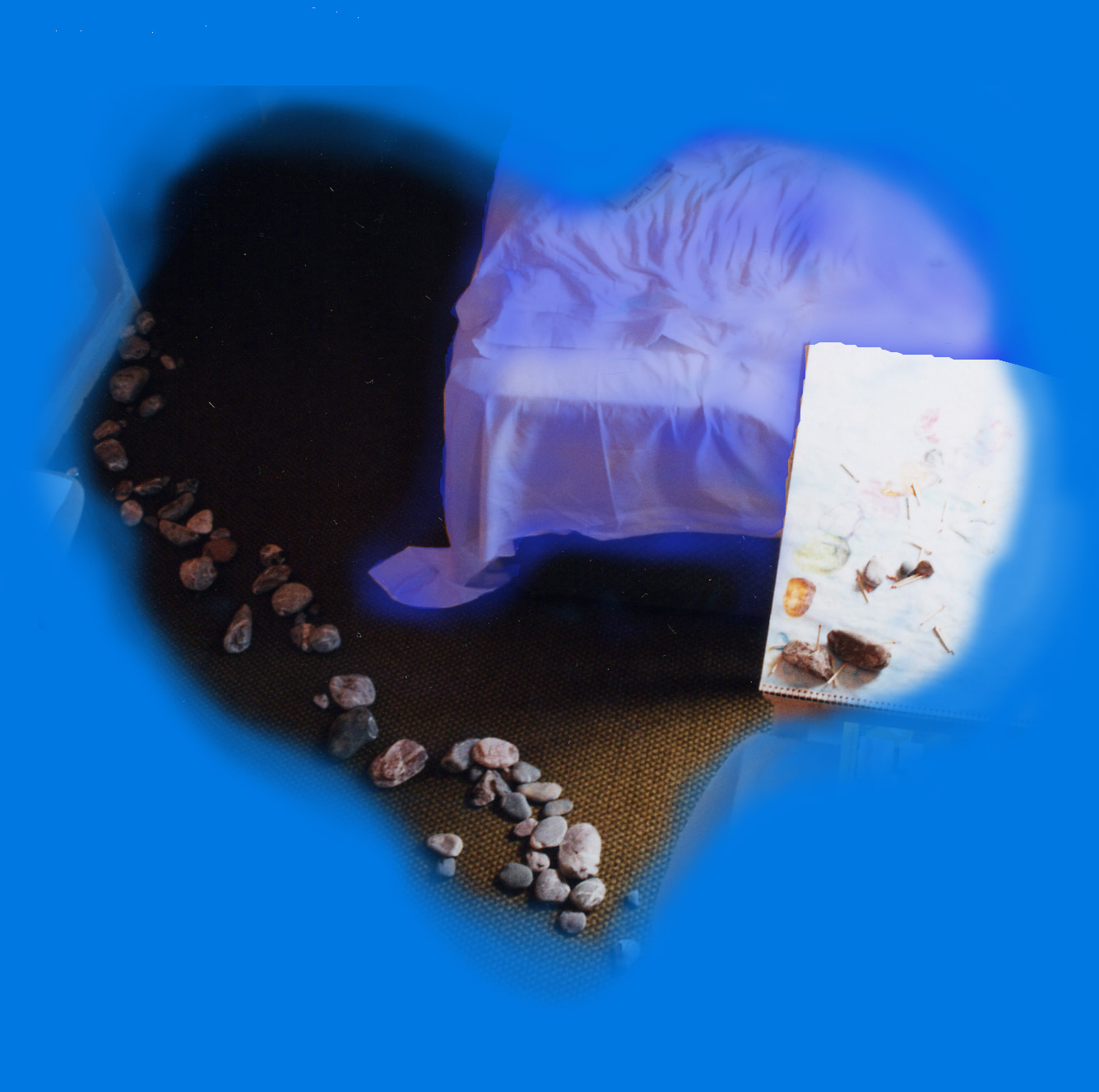
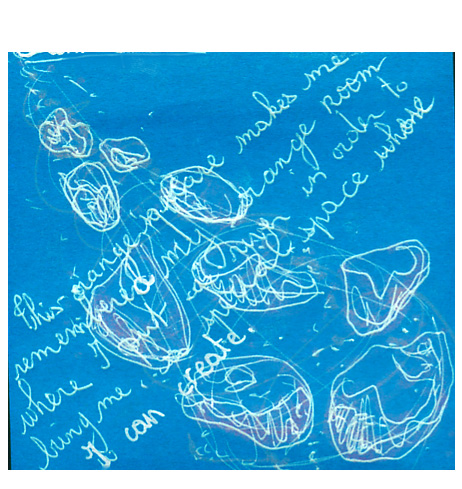
PREMIERS SOUVENIRS I / FIRST MEMORIES I
- Color pigment print, 390 mm x 585 mm
Documentation of the washed and dried clothing installation of Yasmine and her family at Rivière des Galets.
- PREMIERS SOUVENIRS II, FIRST MEMORIES II
- Photograph of Aya's pyjama sand sculpture, 80 cm x 120 cm.

Cette image se veut comme une concentration des notions : la naisssance, la mort et la transformation.
- LES ROSES BLEUES II / THE BLUE ROSES II
- Color pigment print, 200 mm x 300 mm.

LES ROSES BLEUES I/ THE BLUE ROSES I
- Series of 40 color prints, 200 mm x 300 mm.

LE GALET BLANC I / THE WHITE PEBBLE I
- Documentation of the ephemeral sculpture Le Galet Blanc, colonizing a 1 m2 space to be tiled to size in the bed of La Rivière des Galets.
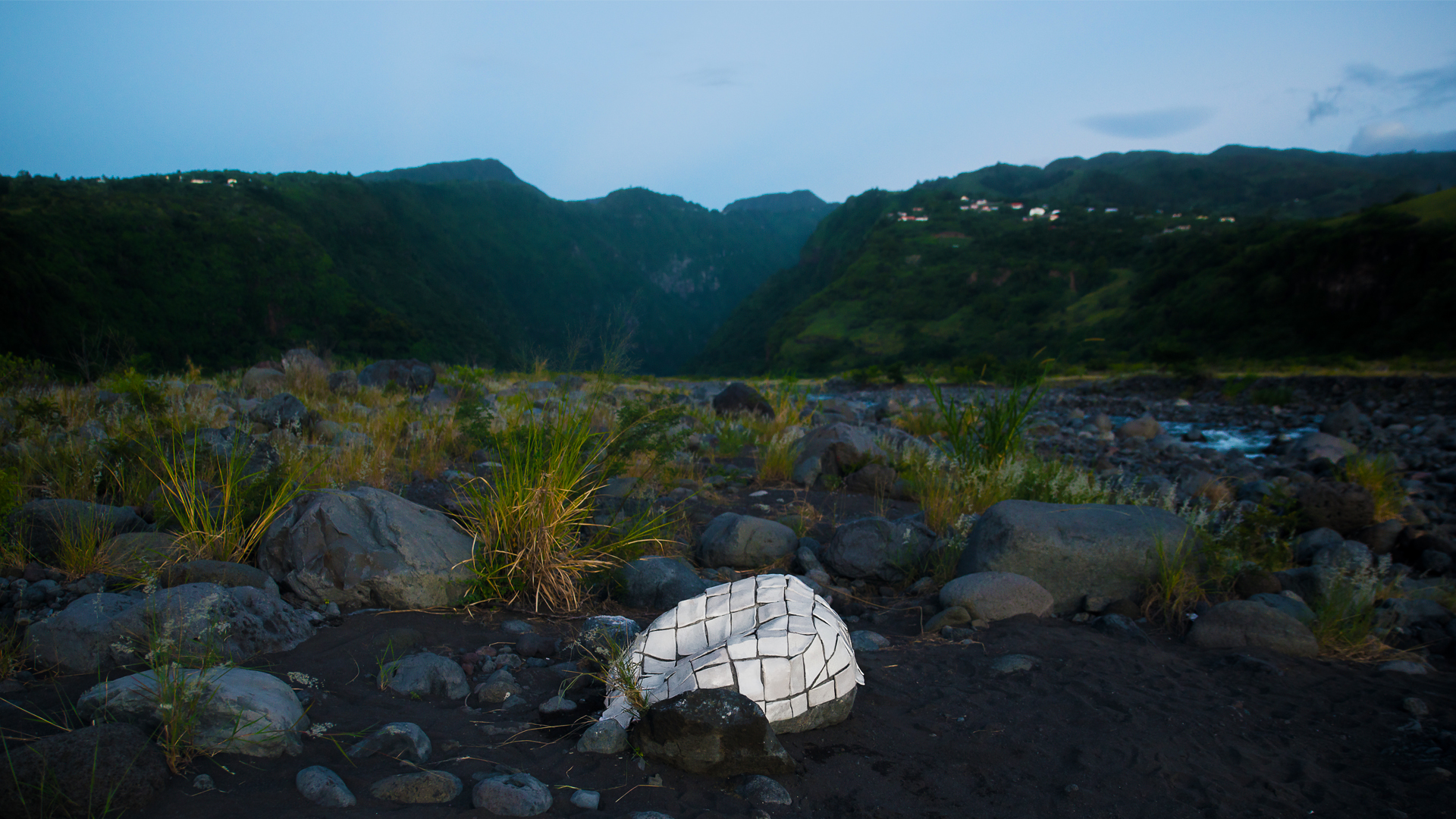
LA RIVIÈRE DES GALETS : OBSERSATION I / THE RIVER OF PEBBLES : OBSERVATION I
- Series of 12 colour prints, variable format.
.

LA RIVIÈRE DES GALETS À CIEL OUVERT / THE OPEN-AIR PEBBLE RIVER
- Socio-cultural art project in 3 phases:
Dance performance by artists from Rivière des Galets, illustration on pebbles by children from Auguste Lacaussade elementary school and photographic fresco.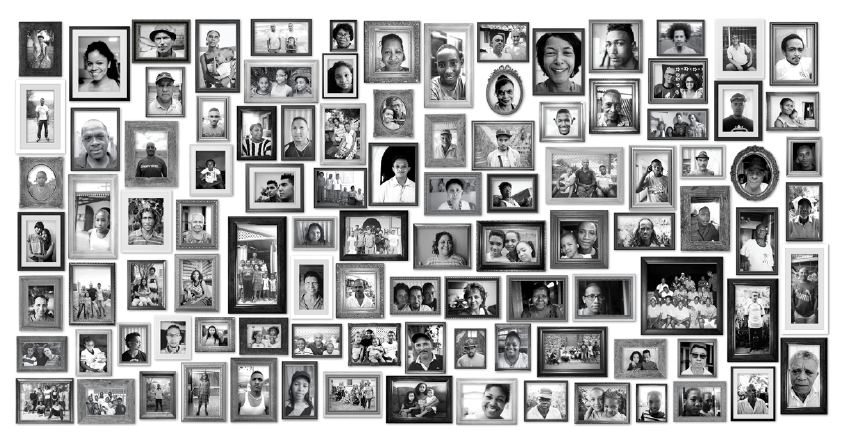
Display of a photographic fresco on one of the Rivière des Galets dikes.
The dike becomes a metaphor for the wall of the house where photographs of family and friends are hung.
Portraits of inhabitants of the village of Rivière des Galets, Port-Possession on the last dike towards Mafate.
Project supported by Défi Jeune.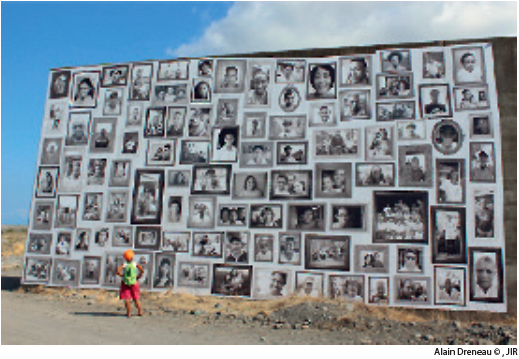
L'ESCALIER / THE STAIRS
- Tropical wood structure 1.5 m x 1 m x 1 m, circular glass table 70 cm, Rivière des galets sand staircase (sand and water-based glue), nylon thread, water. accent lighting.
 .
. 
LA RIVIÈR DÉ GALÉ, SOUVENANS ASWAR / THE RIVER OF PEBBLES SOUVENIR OF TONIGHT
LA RIVIÈR DÉ GALÉ, SOUVENANS ASWAR*. The title is in Reunion Creole, and means La Rivière des Galets, souvenirs du soir. The river and village of Rivière des Galets in the north-west of Reunion Island is a source of inspiration that can be approached in different ways, all singular, for artistic experiments. I'm using an oxymoron here to talk about the ecological challenges facing this inhabited microterritory: the river becomes a metonymy for Reunion Island, a metaphor for planet Earth. The heritage aspect is also dealt with, both through knowledge of biodiversity - in this case plants - and the experiences of people, history, space and the imaginary.
Thanks to the support of ADAGP, I've been able to carry out research on this territory and refine my view of the idea of inhabiting Rivière des Galets.
LE GALET BLANC II / THE WHITE PEBBLE II
- Uninstalled imprint of the custom-made earthenware tiles prepared for installation on 1m2 of the Rivière des Galets.
As the floor has moved, the tiles no longer fit the shape around the Galet Blanc.

Comparing a vanished sculpture with an imprint of a vanished surface.
À LA BONHEUR-E ! / HAPPYNESS OR AT THE RIGHT TIME ( word french game)
- Frozen water from Rivière des Galets, various types of frames, dust - sheep - plastic and organic micro detritus from Yasmine's house

I stage physical quantities such as temperature and gravity, which accompany the phenomenon of exchange entropy. This research speaks of non-emptiness and impermanence. Here, the ephemeral proposition allows us to apprehend the world and bear witness to the power of Nature. There is the time of human action (that of the artist and the viewer), of Nature with water and finally of the universe materialized by dust. This superimposition shows the fragility of each element at different time scales. The object undergoes transformation, and its disappearance is restored to us through the trace, the poetic.
TERRITOIRES PRÉCAIRES / PRECARIOUS TERRITORIES
ARBRES BLANCS I / WHITE TREES I
- 42-minute color video (presented in a loop) projected onto fabric.

ARBRES BLANCS II, / WHITE TREES II
- Cyanotype on textile - shroud, 3 m x 1.5 m.

RIVAGE I, version 7 / SHORE I, version 7
- 30-minute color video (presented in a loop) on cathode-ray television.
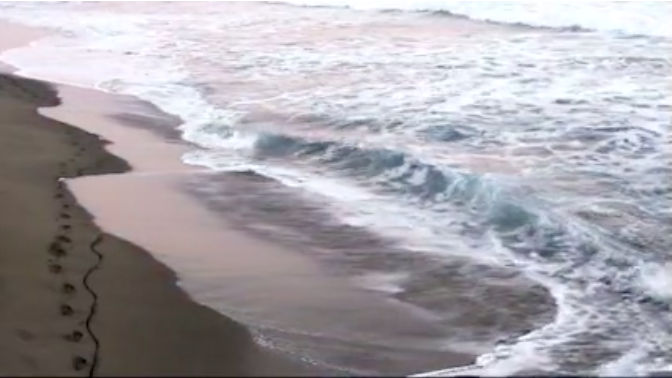
RIVAGE III, RAVINE DES SABLES / SHORE III, SAND GULLY
- Print colour, 97 cm x 160 cm

Cette photographie est un autoportrait construite sur des entre-deux. Entre ciel et mer, entre terre et mer, entre stationnement et mouvement, entre solide et liquide, entre l’homme et les éléments. C’est une remise en question la place de l’artiste, de l’être humain.
- Documentation vidéo de la sculpture éphémère Le Mur Blanc.

Ongoing documentary photography project on the banks of the Betsiboka and the village of Boanamary.

RIVAGES DE LA PLAGE TOURISTIQUE I / SHORES OF THE TOURIST BEACH I
- Série of 6 prints colour, variable formats.
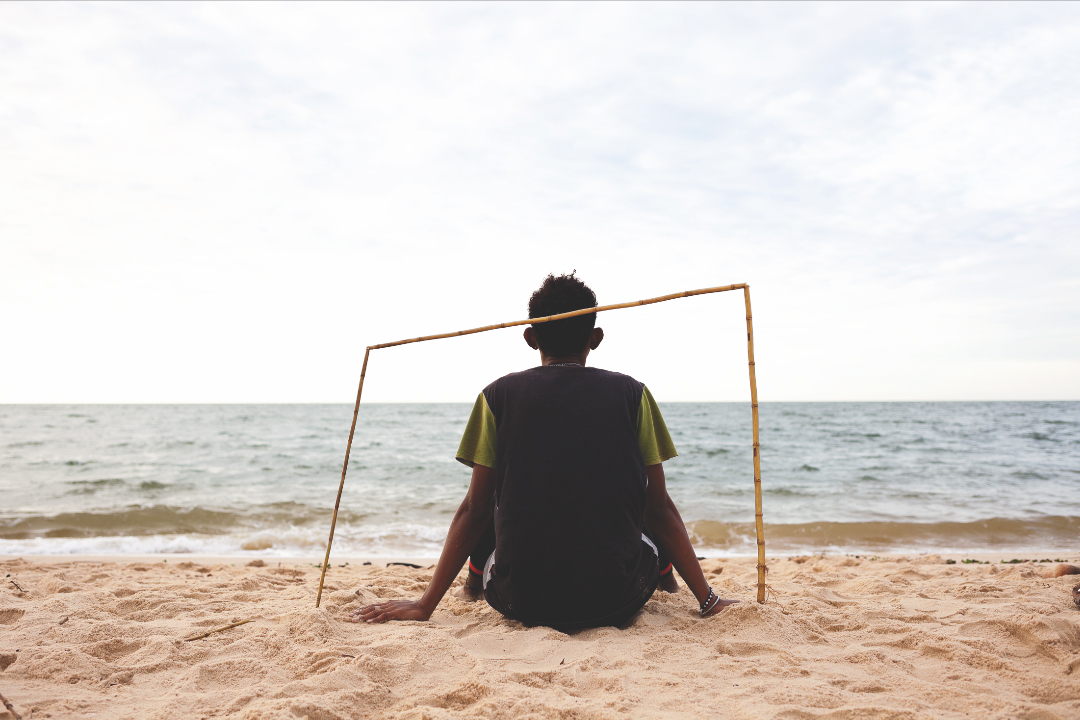
RIVAGES DE LA PLAGE TOURISTIQUE II, MAHAJUNGA / SHORE OF TOURIST BEACH II, MAHAJUNGA
- Serie of 5 prints colour, variable formats .
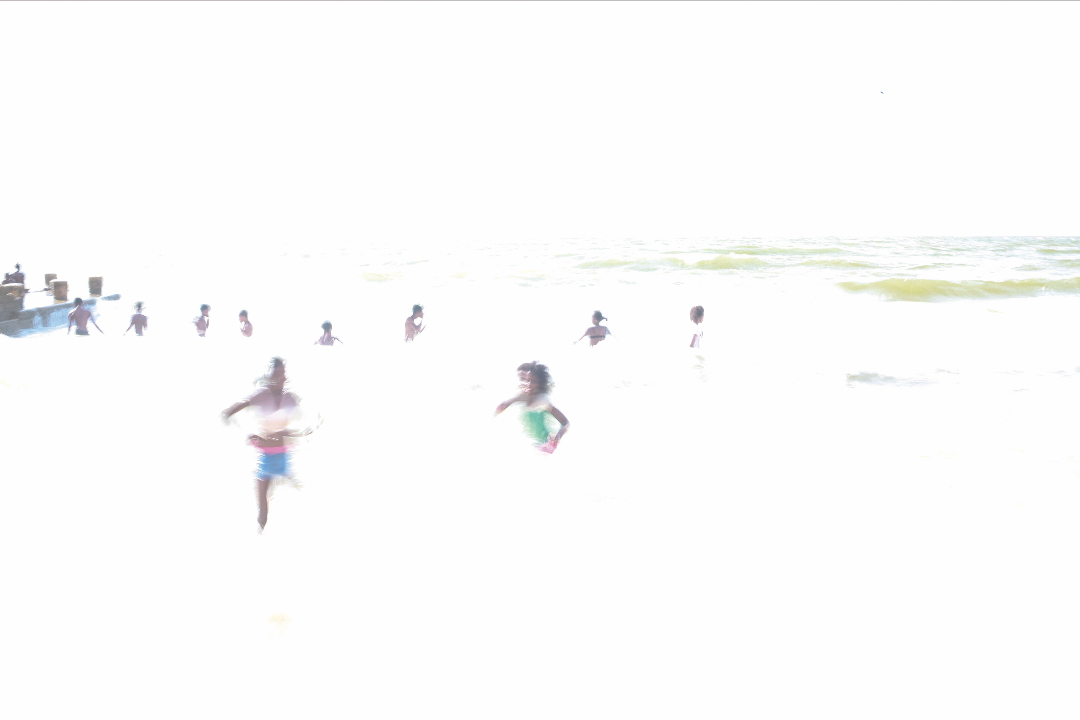
LE MUR BLANC II / THE WHITE WALL II
- Audiovisual installation, 20 min color video (looped) and ceramic breezeblock.

A 27-minute performance in English and Creole from La Réunion, built around the poem of the same name and accompanied by 2 videos.
Fonn kèr si la mèr was presented at the Studium generalday Markings and Moorings: Indigo Waves and Other Stories, for the Oceanic Imaginaries Conference Festival organized by the Gerrit Rietveld Academie. a commisarriat of Michelangelo Corsaro, Natasha Ginwala, Bonaventure Soh Bejeng Ndikung.
The performance was also presented and modified for the (Perma)cultures of affect research project curated by Luísa Santos at Le Hangar, Portugal.

What's striking about Reunion Island is its natural landscapes: volcanoes, mountains, cirques, rivers, ravines, coastlines that erode intensely and constantly. And if you listen, you'll hear the voices of men, women and children speaking French, Malagasy, Swahili, Chinese, Urdu and Creole. Like a bridge, the Creole language creates the link between these peoples who want to live together from the depths of the history of colonization and slavery. With Fonn kèr si la mèr*, Yasmine Attoumane invites you to listen to sound extracts from Malagasy and Reunionese lullabies from the Bouteilles inaudibles project, as well as a poetic reading on the concept of Amarres, inspired by the work of Françoise Vergès and Carpanin Marimoutou.
*FONN KÈR is a form of poetry, meaning “what I have in the depths of my heart and soul”, and the word SI LA MÈR is polysemous: on the mother or on the sea.
TRACES DE MES PAS / MY FOOTPRINTS
- 2 images restored from B/W Polaroids, 80 mm x 60 mm
Below, image 1

AU FIL DE L’EAU / ALONG THE WATER
COUDRE LA SEINE / STITCHING THE SEINE RIVER
-
A 3-hours performance, refrigerator, plates of frozen water from the Seine River, needles, wool, fatapera (1), Masojoany beauty mask (2) applied to Yasmine's face

1- Fatapera is a traditional fireplace or stove used both indoors and outdoors in Madagascar. It is either made of recycled metal or fireclay, is small and portable.
2- The Masoanjony mask is a beauty mask applied to the face with graphic flower motifs. It is made of water and sandalwood, rubbed against a rough surface of stone or coral to obtain an unction. The Masoanjony mask protects against pollution, mosquitoes and the sun. It has a curative role, cleansing, repairing and caring for the face against external aggressions. Yasmine used to use her beauty mask to create distance with the onlookers. Today, she uses it as a symbol of Man's heritage of interdependence with Nature.
PORTEZ LA SEINE / WEARING THE SEINE RIVER
- Dress of silver prints from B/W silver film on textile.

COMMENT FAIRE VOLER LA MEUSE I ? / TO MAKE THE MAAS RIVER FLY
-
1 h 57 min colour video performance, looped on cathode-ray television.

COMMENT FAIRE VOLER LA MEUSE II ? / TO MAKE THE MAAS RIVER FLY
-
A 20-minute performance in English with an introduction to a poem and Creole from La Réunion, it is in the middle of her fataperas (1) that Yasmine plays and relates his tale Comment faire voler la Meuse ?

Yasmine creates stories from dialogues with the river to heal her anxieties about the future in this cosmogonic tale with slightly autobiographical overtones. The work of the River is an escape not from the climate emergency, but from the urgent need to change our perception of and relationship with the world.
1- Fatapera is a traditional fireplace or stove used both indoors and outdoors in Madagascar. It is made either of recycled metal or fireclay, and is small and portable.
CHERCHER L'EAU À LA RIVIÈRE / GETTING WATER FROM THE RIVER
- Documentation, series of 32 b/w prints, 200 mm x 300 mm

MES ARCHIVES ONIRIQUES / MY ONEIRIC ARCHIVES
- Series of 11 silver prints from b/w silver film, 200 mm x 250 mm.
Yasmine has sculpted 12 fataperas (1). The fataperas are made from a variety of materials, including rock - in this case, Maastricht flint and Tuffeau (2), ceramics - clay and stoneware, concrete, metal, wood and glass. She lost 1 and was unable to archive 11 images of 12 fataperas.

Yasmine's archives are interstices between real and imaginary space, between past, present and future, between the living object and its ruin, between life and death. With a certain economy of means, fatapera refers to the idea of survival and home as a place. Yasmine uses elemental energies in one of their most primal forms to speak of preserving our resources, to commune with the Water entity.
1- Fatapera is a traditional hearth or stove used both indoors and outdoors in Madagascar. It is either made of recycled metal or fireclay, and is small and portable.
2- Flint and Tuffeau are local materials, i.e. from the Limburg region of Maastricht in the Netherlands, made from siliceous rock and limestone respectively.
- Series of 3 gelatin silver prints from B/W silver film, 300 mm x 300 m.
Below, Untitled #2


